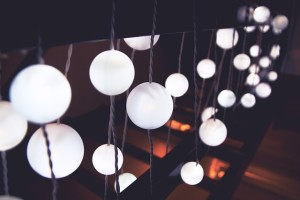 Ever since several countries around the world began phasing out incandescent light bulbs (a complete phase-out takes effect in the United States in 2020), retrofitting existing lights with energy efficient alternatives has been one of the main investments of many homeowners, especially in [city].
Ever since several countries around the world began phasing out incandescent light bulbs (a complete phase-out takes effect in the United States in 2020), retrofitting existing lights with energy efficient alternatives has been one of the main investments of many homeowners, especially in [city].
Retrofitting refers to the addition of new technology to improve an existing system. In the context of home lighting, it simply means replacing an old lighting system with better and more energy efficient technologies, such as light-emitting diode (LED) light bulbs.
With electricity costs not getting any cheaper, retrofitting your home with LED lighting is one of the best ways to save money on your utility bill. Replacing your incandescent lights, however, requires some planning and research on LEDs as they’re not exactly the same as your ordinary bulb.
Below are some factors to consider before making the big switch.
Switch Your Lights Gradually
LED light bulbs are usually more expensive than incandescent and compact fluorescent lamps (CFLs), so replacing all your lights with LEDs may not be a practical investment for many [city] homeowners. Don’t be pressured to switch all existing lights to LEDs if you can’t afford to, as you can still reduce your electricity bill by replacing lights in areas where you use them the most—think of your bedroom, living room, or kitchen. Switching gradually also allows you to test your bulbs’ performance and see if you’re satisfied with their lighting quality.
Not All LED Light Bulbs Are the Same
One of the main issues many consumers have with LED lighting is the lack of standardization with LED bulbs. Different manufacturers have their own take on LEDs, which means that lighting quality can vary greatly between who’s making your light bulbs. This highlights the importance of testing your LED lights before purchase and choosing bulbs from a reliable LED manufacturer.
Look at Lumens, Not Wattage
It used to be that all you needed to know about a light bulb to determine its brightness was the number of watts it used. For decades, wattage ratings have been our main reference for lighting power, but that’s all changed with the emergency of new lighting technologies. With LEDs, wattage ratings mean little, not when you have a 5-watt LED light bulb that can produce the same, if not more light, than a 60-watt incandescent light bulb.
Instead, what you should for in an LED bulb is its lumens rating. A lumen is the measure of light perceived by the human eye—in short, its brightness. The more lumens an LED generates for less watts, the more energy efficient it is.
Use a Dimmer
One of the main advantages LEDs have over CFLs is their compatibility with most third-party dimming controllers; in contrast, CFLs have always had problems with dimmers. A dimming controller allows you to control the level of light generated by your LEDs, which may seem gimmicky at first, but actually helps you save more electricity. If you need more light, simply turn the dimmer to its highest setting, and lower settings if you need less.

![Lighting Fixture Maintenance: How to Make Your Lighting Last Longer [city]](https://eepros.com/wp-content/uploads/2020/04/tools-690038_640-300x200.jpg)
![The Benefits of LED Lighting for the Elderly in [city] [city]](https://8blocks.s3.amazonaws.com/eepros/blog-images/2015/11/hands-981400_640-300x199.jpg)
![Why LEDs? Positive Changes LED Lights Offer Businesses [city]](https://eepros.com/wp-content/uploads/2019/09/office-1081807_640-300x200.jpg)
![5 Energy-Saving Commercial Lighting Tips for Spring [city]](https://eepros.com/wp-content/uploads/2020/03/skyscrapers-3100994_640-300x200.jpg)